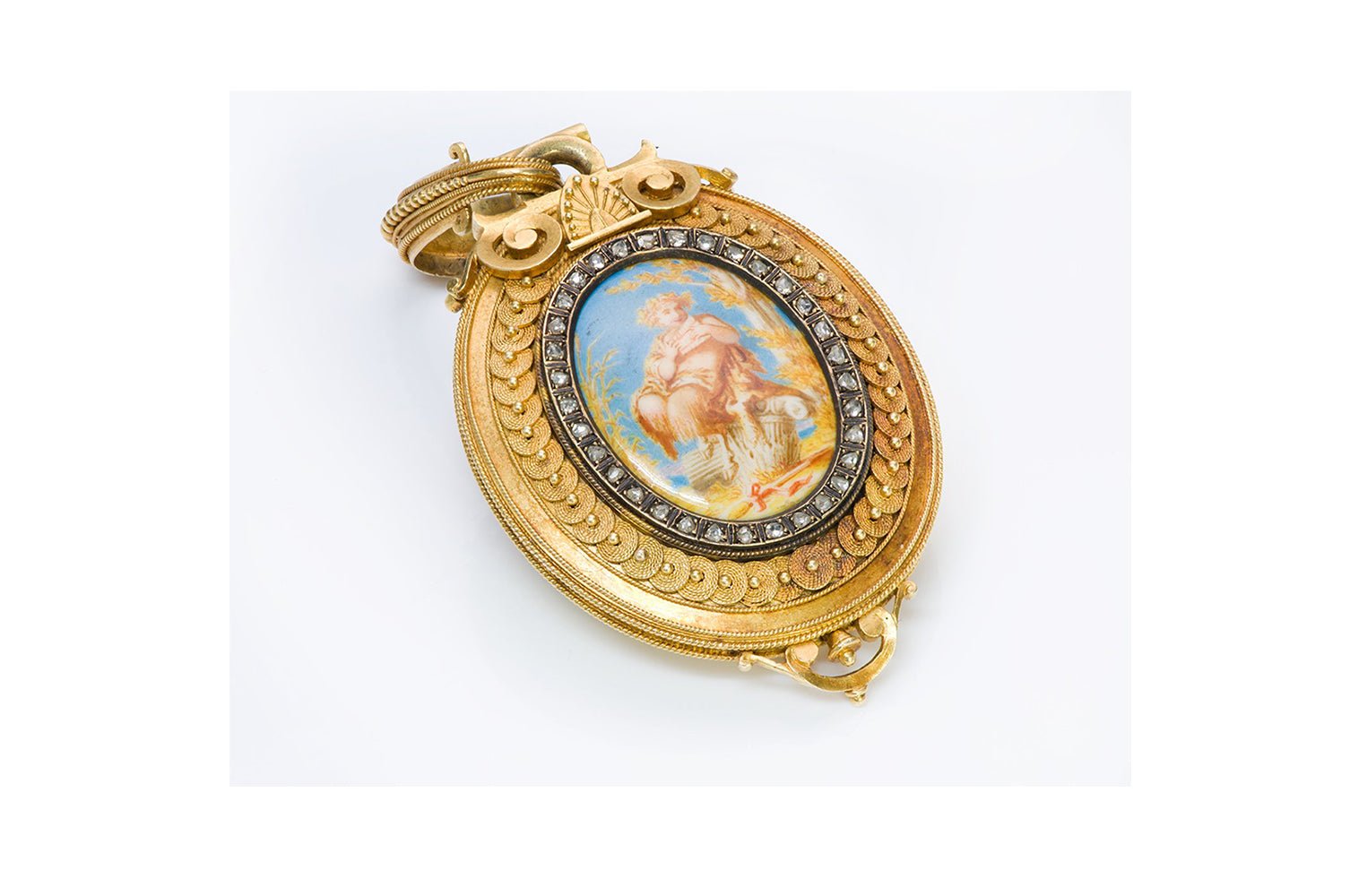
Eugène Fontenay - The Famous French Jeweler That Made History
Eugène Fontenay is one of the most skilled and accomplished goldsmiths in history. His jewelry pieces and objects are true works of art that reflect the brilliance of this famous French designer.
The History of Eugène Fontenay
Born in 1824 in Paris in a modest family of goldsmiths, young Eugène Fontenay, just twenty-four years old, managed to open his workshop with many sacrifices, but he had to wait more than ten years to receive the first important order that will open the doors of international high society to him.
According to "Cultura del Gioiello", that moment came in March 1858, when he was called to make an important piece of jewelry for Empress Eugenia, the wife of Napoleon III. It was an elegant diadem whose central stones could be interchanged with diamonds, sapphires, or pearls, according to the occasion or the type of clothes worn.
 Eugène Fontenay Antique Etruscan Revival Pendant Locket
Eugène Fontenay Antique Etruscan Revival Pendant Locket
The most complex work took him nine years to accomplish (from 1858 to 1867), for a total of 4,320,000 francs. It was an absolutely spectacular table service made for Said Pascià, viceroy of Egypt, consisting of forty-two covers in embossed gold, diamonds, blue enamels, and pearls, completed by two large candlesticks and seven fruit bowls.
In 1867 Eugène Fontenay had finally reached the possibility of making the jewelry he loved most, also participating in the Universal Exposition that was held that year in Paris.
An Important Source of Inspiration
The style of Eugène Fontenay - as well as that of many other famous artists and goldsmiths throughout Europe - developed precisely based on this collection and on the remakes elaborated by the Castellani in Rome and, subsequently, by Carlo Giuliano in London.
The Style of Eugène Fontenay
The French designer was a great perfectionist, he used a few precious stones, preferring the wide choice that hard stones offered him (he was the first to use jade in the West) combined with enamels, cameos, and even micro-mosaics. He used engraving, embossing, chisel, filigree, and granulation to adorn his creations, always trying to find the right measure in everything.

Eugène Fontenay Antique Etruscan Revival Gold Pendant Locket
In 1882 Eugène Fontenay retired from the market to devote the last five years of his life entirely to travel, studies, and the writing of numerous articles, books, and treatises on precious stones and ancient and modern goldsmiths.
"I like to imagine the gold of diadems, necklaces, fibulae, pendants, which stands out on black hair, running like a stream of fire on leathers with warm and brown tones and traces fantastic arabesques on the simple folds of elegant white tunics", said Eugène Fontenay in one of these texts, as a passionate lover of beauty as he was.


















